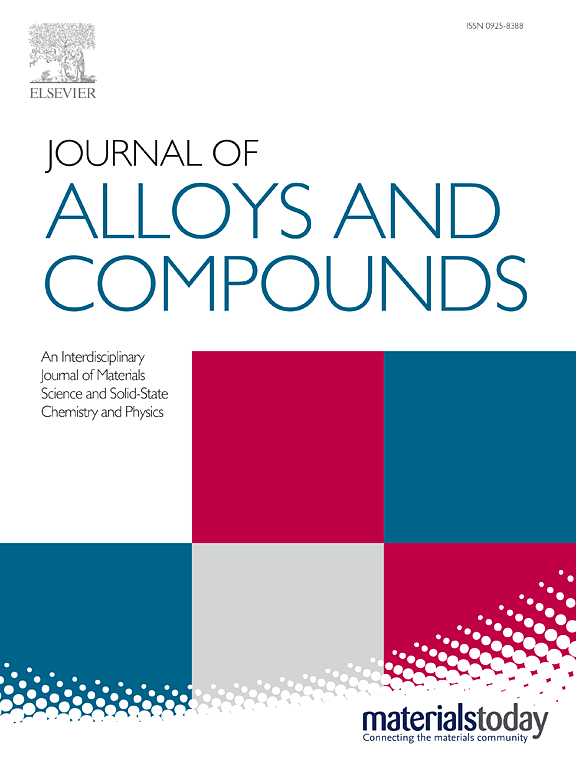三维多孔Ti-15Ta合金表面双重钝化机制:碱性热处理和生物矿化的协同作用
IF 5.8
2区 材料科学
Q2 CHEMISTRY, PHYSICAL
引用次数: 0
摘要
为解决现有钛合金植入物机械适应性与生物腐蚀之间的矛盾,本研究以钛和钽为原料,采用聚乙烯醇模板辅助粉末冶金技术制备了具有宏微纳分层多孔结构的Ti-15Ta合金。通过碱性热处理和生物矿化,在表面形成TiO2/Ta2O5和羟基磷灰石的双重钝化层。结果表明,添加15wt % PVA的样品孔隙率为51.5%,抗压强度为151.1 MPa,弹性模量为18.8 GPa,与皮质骨力学匹配良好。表面改性后,腐蚀电流密度低至5.15×10-6 A·cm-2,极化电阻达到9.2×103 Ω·cm2,腐蚀电流密度比原始样品降低了约2个数量级。钝化电位范围从0.1 V扩大到1 V,显著提高了耐蚀性。本研究提出了“多孔力学自适应-双钝化层防腐”的双功能策略,以保证长期的生理稳定性。本文章由计算机程序翻译,如有差异,请以英文原文为准。
Three-Dimensional Porous Ti-15Ta Alloy Surface Dual Passivation Mechanism: Synergy of Alkaline Heat Treatment and Biomineralization
To address the contradiction between mechanical adaptability and biological corrosion in existing titanium alloy implants, this study fabricated Ti-15Ta alloys with macro-micro-nano hierarchical porous structures using polyvinyl alcohol (PVA)-template-assisted powder metallurgy, with titanium and tantalum as raw materials. Alkaline heat treatment and biomineralization were applied to form a dual passivation layer of TiO2/Ta2O5 and hydroxyapatite on the surface. Results showed that the sample with 15 wt% PVA had a porosity of 51.5%, a compressive strength of 151.1 MPa, and an elastic modulus of 18.8 GPa, demonstrating good mechanical matching with cortical bone. After surface modification, the corrosion current density was as low as 5.15×10-6 A·cm-2, and the polarization resistance reached 9.2×103 Ω·cm2, representing a decrease in corrosion current density by approximately two orders of magnitude compared to the original sample. The passivation potential range expanded from 0.1 to 1 V, significantly enhancing corrosion resistance. This study proposes a dual-function strategy of "porous mechanical adaptation - dual passivation layer anti-corrosion" to ensure the long-term physiological stability.
求助全文
通过发布文献求助,成功后即可免费获取论文全文。
去求助
来源期刊

Journal of Alloys and Compounds
工程技术-材料科学:综合
CiteScore
11.10
自引率
14.50%
发文量
5146
审稿时长
67 days
期刊介绍:
The Journal of Alloys and Compounds is intended to serve as an international medium for the publication of work on solid materials comprising compounds as well as alloys. Its great strength lies in the diversity of discipline which it encompasses, drawing together results from materials science, solid-state chemistry and physics.
 求助内容:
求助内容: 应助结果提醒方式:
应助结果提醒方式:


